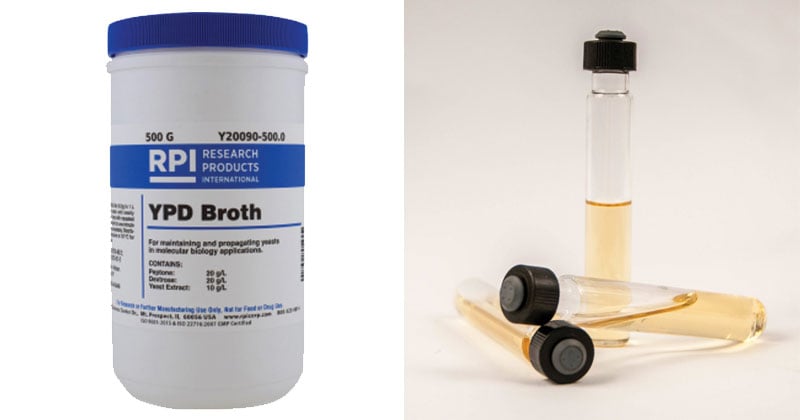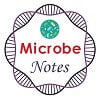Peptone Yeast Extract Broth Based Media are enriched nonselective media that are supplemented with hemin and vitamin K to facilitate the recovery of the more fastidious organisms such as Prevotella spp, Porphyromonas spp, and the Bacteroides fragilis group. With the addition of a specific biochemical, the Peptone Yeast Extract Broth Based Media are used to determine whether anaerobic bacteria will utilize the biochemical or if growth is stimulated or inhibited. Peptone Yeast Extract Glucose Broth is a nonselective broth media originally formulated by the Virginia Polytechnic Institute Anaerobe Laboratory (VPI) group to facilitate the recovery of more fastidious microorganisms and for use in chromatographic analysis of metabolic products from the fermentation of glucose. This chromatographic analysis is useful in the identification of clinically important anaerobic bacteria. The media is prepared, dispensed, and packaged under oxygen-free conditions in order to prevent the formation of oxidized products prior to use.

Interesting Science Videos
Composition of Peptone Yeast Extract Glucose Broth
| Ingredients | Grams/Liter |
| Pancreatic Digest of Casein | 20.0gm |
| Yeast Extract | 10.0gm |
| Glucose | 10.0gm |
| L-Cysteine | 0.5gm |
| Sodium Bicarbonate | 0.4gm |
| Sodium Chloride | 0.08gm |
| Monopotassium Phosphate | 0.04gm |
| Dipotassium Phosphate | 0.04gm |
| Calcium Chloride, Anhydrous | 0.008gm |
| Magnesium Sulfate, Anhydrous | 0.008gm |
| Hemin Solution, 0.1% | 5.0ml |
| Vitamin K Solution, 1% | 0.1ml |
Final pH 7.3 +/- 0.5 at 25ºC.
Principle of Peptone Yeast Extract Glucose Broth
Peptone Yeast Extract Glucose Broth contains a pancreatic digest of casein and yeast extract that supplies nitrogenous compounds and other nutrients required for the growth of anaerobic bacteria. Sodium bicarbonate and dipotassium phosphate are buffers. Glucose serves as an energy source and L-cysteine is a reducing agent and maintains low oxygen potential which aid to stimulate the growth of anaerobic microorganisms. The growth factors hemin which supplies X factor and vitamin K are required for growth by many fastidious anaerobes and are also known to promote pigment production in certain anaerobic species. Sodium, potassium, calcium, and magnesium salts are pH stabilizers that help to maintain osmotic balance and provide critical ions used in transport. The medium is prepared and processed in an atmosphere of nitrogen and hydrogen.
Preparation of Peptone Yeast Extract Glucose Broth
- Add components to tap water and bring volume to 1.0 L.
- Mix thoroughly.
- Gently heat and bring to boiling.
- Distribute into tubes or flasks.
- Autoclave for 15 min at 15 psi pressure–121°C.
- Pour into sterile Petri dishes or leave in tubes.
Result and Interpretation on Peptone Yeast Extract Glucose Broth
A positive result (inoculated medium): Growth is evident by observation of slight turbidity (cloudiness) with smooth (sometimes stringy, granular, or flocculent) sediment.
A negative result (uninoculated medium): No growth, no turbidity
pH Measurements
- Once sufficient growth has been observed, the pH can be read directly from the culture tube using a pH meter and a long thin combination electrode.
Interpretation of pH
- A pH value of 5.5 to 6.0 is considered a weak acid production.
- A pH value of 5.5 or less is strong acid production.
- A pH above 6.0 is indicative of no acid production.
Uses of Peptone Yeast Extract Glucose Broth
- It is used for the cultivation and biochemical identification of obligately anaerobic microorganisms.
- It is used to identify the short chain acid end products and for the determination of glucose fermentation by anaerobic bacteria for identification from clinical specimens.
- It is also suitable for the growth of anaerobic bacteria to be identified by gas-liquid chromatography (GLC) analysis.
Limitations
- Additional testing such as morphological, biochemical, and/or serological tests should be performed for final identification to confirm the findings.
- This broth will not provide complete information for the identification of bacterial isolates.
References
- Himedia
- Thermofisher
- Becton, Dickinson and Company
- Hardy Diagnostic
- Anaerobe Systems
